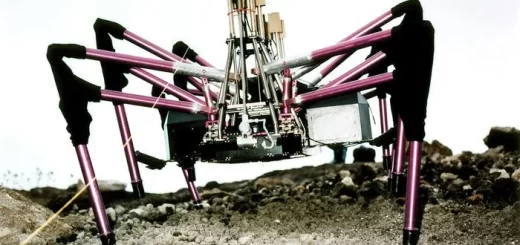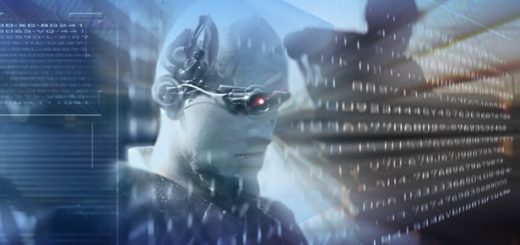Robot-Assisted Heart Surgery types, benefits, risks, Robotic heart vs. open heart surgery
Robotically-assisted heart surgery is also called closed-chest heart surgery, It is a type of minimally invasive heart surgery performed by a cardiac surgeon, The surgeon uses a specially-designed computer console to control surgical instruments on thin robotic arms, Robotically-assisted heart surgery allows surgeons to perform certain types of complex heart surgeries with smaller incisions and precise motion control, offering patients improved outcomes.
What is robotic cardiac surgery?
It is heart surgery done through very small cuts in the chest, with the use of tiny instruments and robot-controlled tools, surgeons can do heart surgery in a way that is much less invasive than open-heart surgery, The procedure is called da Vinci surgery because that is the name of the manufacturer of the robot often used for this procedure.
Robotic surgeries are used for different heart-related procedures such as valve surgery, coronary artery bypass, cardiac tissue ablation, heart defect repair, and tumor removal. It is a minimally invasive approach to heart surgery, involving the use of robotic devices, miniature cameras, and precision instruments to access the heart without having to make a large incision.
Structure of the computer-enhanced robotic system
The computer-enhanced robotic system consists of three components, which are: A three-dimensional view of the surgical field, including depth of field, magnification, and high resolution, The instruments on thin robotic arms that are designed to mimic the movement of the human hands, wrists, and fingers, allowing the extensive range of motion and more precision, Master controls that help the surgeon to manipulate the instruments, they can translate the surgeon’s natural hand and wrist movements into corresponding, precise and scaled movements.
What happens during robotic cardiac surgery?
The patient can receive a sedative before the procedure to help him relax, the patient will be placed under general anesthesia for the procedure and he will have a breathing tube, The surgeon will make a series of keyhole-sized incisions on the side of his chest, These incisions will align with the openings between the ribs.
Depending on the procedure being done, the surgeon will insert several precision-guided robotic arms into these incisions, These robotic arms hold and manipulate tiny instruments to do the required tasks on the heart or surrounding arteries, A tiny video camera will be inserted into another incision to provide a magnified, three-dimensional image of the operating site, The surgeon can control the robotic arms and camera from a console located within the operating room, Once complete, the surgeon will remove the instruments and close the incisions.
What happens after robotic cardiac surgery?
You can expect less scarring on your chest, Open-heart surgery may leave a 10-inch scar on your chest, Robotic cardiac surgery just leaves a few smaller scars on the side of your chest, Pain also tends to go away much faster than with open-heart procedures.
You can return to normal activities more quickly than you would after open-heart surgery, Most people can resume their normal activities after a few weeks, Your healthcare provider will provide specific recommendations for activity. Your healthcare provider will schedule follow-up appointments to check your progress, Be sure to tell your healthcare provider right away if any symptoms occur after the procedure, such as chest pain or discomfort.
How is robotically-assisted heart surgery performed?
Three small incisions are made in the spaces between the ribs, The surgical instruments (attached to the robotic arms), and one camera are placed through these ports, Motion sensors are attached to the robotic wrist so the surgeon can control the movement of the surgical instruments.
The surgeon sits at the computer console and looks through two lenses that display the images from the specialized camera with two optical outputs, the computer generates a clear, three-dimensional image of the surgical site for the surgeon to view, Foot pedals offer precise camera control, so the surgeon can zoom in and out to change the surgical view, and control the movement of the endoscopic instruments.
The surgeon’s hands control the movement and placement of the endoscopic instruments, The robotic “arm and wrist” movements mimic those of the surgeon, they are more precise than the surgeon’s natural hand and wrist movements, The surgeon is in control during the surgery; there is no chance that the robotic arms will move on their own.
Robotic heart surgery advantages
Robotically-assisted surgery offers smaller incisions with minimal scarring, and less trauma to the patient, It reduces pain, and hospital stay (usually 3 to 4 days), It decreases the use of pain medications, and the risk of infection, It reduces bleeding & blood loss, Robotically-assisted surgery offers shorter recovery time and quicker return to daily and professional activities.
Robotic cardiac surgery is minimally invasive compared with open-heart surgery, Smaller incisions mean that you can heal faster and return to activities more quickly. The healthcare provider recommends robotic cardiac surgery when you need an artery bypass procedure to improve blood flow to the heart, It can be used to repair or replace stiff or leaky heart valves, It is used to correct atrial fibrillation, a common type of arrhythmia, It is used to remove a tumor in the heart, and to treat congenital heart conditions.
In traditional heart surgery, surgeons open up the chest to access the heart for repair, This approach requires cutting through the breast bone and opening up the rib cage, necessitating a very large incision. With a robotic approach, surgeons don’t have to cut through the breastbone, we slip instruments through small incisions between the ribs.
Risks of robotic heart surgery
Robotic heart surgery is a minimally invasive approach that has some risks, most of which are also risks in traditional open-heart surgery, There are many complications such as bleeding, infection, stroke, arrhythmias, or an irregular heartbeat.
Robotic cardiac surgery has fewer risks than open-heart surgery, The surgeon does not have to cut through the breastbone to open your chest, This removes many of the complications of open-heart surgery. Although the risk of these complications is lower in a robot-assisted or minimally invasive surgery than in traditional open-heart surgery, There is a very small risk that the surgeon needs to change to an open-chest approach during the surgery.
Robotic cardiac surgery still requires anesthesia and, as with any kind of surgery, there are always risks involved such as heart attack, stroke, infection, and death, In some cases, your surgeon can’t complete the surgery with the robot, so, you would need open-heart surgery.
You can download Science online application on google play from this link: Science online Apps on Google Play
Interventional radiology types, Robotic endovascular systems advantages & disadvantages
Healthcare robotics, Nursing care robots review, types, advantages, disadvantages & uses
Robotic Surgery vs. Laparoscopic Surgery, Robot-assisted surgery features, benefits & drawbacks
Surgical robots types, advantages, disadvantages, How is robotic surgery different from traditional
Robotic surgery cons, pros, uses and How does robotic surgery work?
Applications of Artificial intelligence in the medical field & Healthcare













